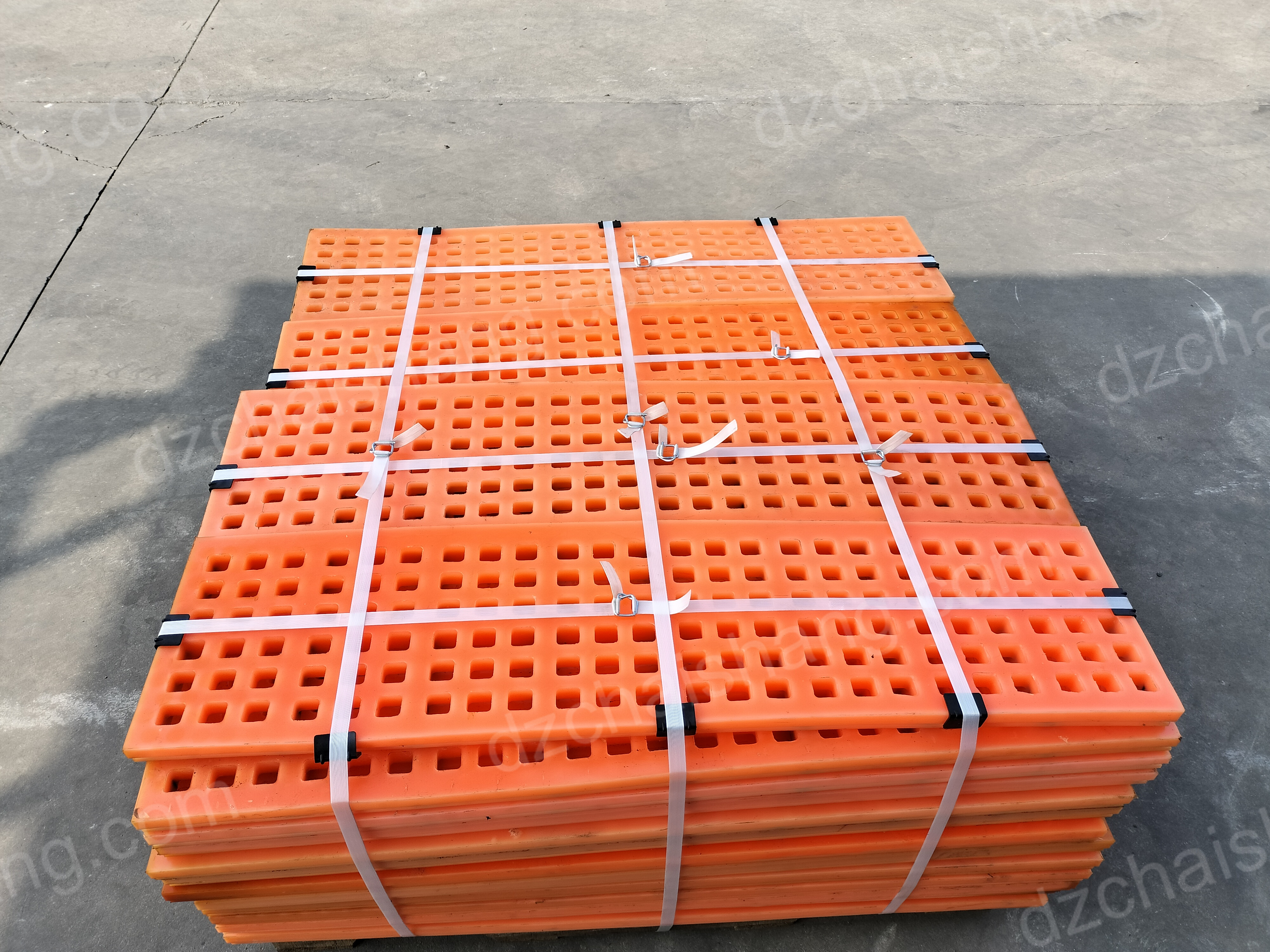- 03
- Jun
flip flop plate,tension screen,fine mesh panel
Product Name: Vibrating screen mesh
Material: (PU)polyurethane/rubber
type:modular/tensioned/high frequency etc.
Popular Dimension: Can be customized.
Customization: Available
Standard service life: 6~12 months
Delivery: 15-45 days depending on the quantity
Email: Jackma@dzchaishang.com
WhatsApp/WeChat: 86-15621266667

The flip flop sieve, also known as the flip flow screen, is an innovative screening device that has revolutionized the screening process in many industries. This device is designed to handle the toughest materials in the harshest conditions. It is particularly useful in industries such as mining, recycling, and waste management, where it is essential to separate materials of different sizes and types.
The flip flop sieve operates on a unique principle. It consists of a series of polyurethane wire mesh plates, which are arranged in a cascading fashion. These plates are flexible and are set in motion by a high-frequency vibration system. As the plates vibrate, they flip and flop, causing the material on the screen to move in a similar manner. This flipping and flopping action helps to prevent the material from sticking to the screen, thus ensuring a more efficient screening process.
The polyurethane wire mesh plates used in the flip flop sieve are highly durable and resistant to wear and tear. They are designed to withstand the impact of heavy materials and the abrasive action of the screening process. The use of polyurethane also ensures that the plates are resistant to corrosion, making them suitable for use in wet and humid conditions.
One of the key advantages of the flip flop sieve is its ability to handle a wide range of material sizes. It can effectively screen materials ranging from fine particles to large lumps. This makes it a versatile tool that can be used in a variety of screening applications.
In addition to its screening capabilities, the flip flop sieve also has a dewatering function. The high-frequency vibration of the plates not only separates the materials but also helps to remove water from the screened material. This is particularly useful in industries such as mining and waste management, where it is often necessary to dewater the material before further processing.
The dewatering screen panel in the flip flop sieve is designed to maximize the removal of water from the material. It has a sloping design, which helps to drain the water away from the material. The high-frequency vibration also helps to shake off the water, further enhancing the dewatering process.
In conclusion, the flip flop sieve is a highly efficient and versatile screening device. Its unique design, combined with the use of durable polyurethane wire mesh plates, enables it to handle a wide range of materials in various conditions. The added functionality of dewatering makes it an invaluable tool in industries where material separation and dewatering are critical processes. Whether it’s mining, recycling, or waste management, the flip flop sieve is a tool that can significantly enhance operational efficiency.
The Essential Guide to Dewatering Screen Panel Maintenance and Optimization
The dewatering screen panel, also known as the flip flop sieve or polyurethane wire mesh plate, is an essential component in many industries, particularly in mining and mineral processing. It plays a crucial role in the separation of water from various materials, thereby enhancing the efficiency of operations. However, to ensure optimal performance and longevity, regular maintenance and optimization of these panels are paramount.
The dewatering screen panel is designed to withstand rigorous conditions, including exposure to abrasive materials and high-pressure water jets. Despite its robust construction, the panel can wear out over time, leading to reduced efficiency and potential breakdowns. Therefore, regular inspection is the first step in maintaining the dewatering screen panel. This involves checking for signs of wear and tear, such as cracks, holes, or thinning of the panel. Any damaged sections should be repaired or replaced promptly to prevent further deterioration.
Cleaning is another critical aspect of maintenance. Over time, particles can accumulate on the screen, reducing its effectiveness in separating water from the material. Regular cleaning using appropriate methods can help maintain the panel’s performance. It’s important to note that harsh cleaning agents or abrasive tools can damage the polyurethane wire mesh plate. Therefore, gentle cleaning methods, such as using a soft brush and mild detergent, are recommended.
In addition to regular maintenance, optimizing the dewatering screen panel can significantly enhance its performance. One way to achieve this is by adjusting the panel’s angle. The angle at which the panel is installed can affect the speed at which water is separated from the material. A steeper angle can increase the speed of dewatering, while a shallower angle can slow it down. Therefore, adjusting the angle based on the specific requirements of the operation can optimize the panel’s performance.
The size of the openings in the flip flop sieve also plays a crucial role in its effectiveness. Larger openings allow more water to pass through but may also let through larger particles. On the other hand, smaller openings can filter out smaller particles but may restrict the flow of water. Therefore, choosing the right size of openings based on the type of material being processed can enhance the efficiency of the dewatering process.
Lastly, the material of the dewatering screen panel can also affect its performance and durability. Polyurethane is a popular choice due to its excellent abrasion and corrosion resistance. However, other materials, such as stainless steel or rubber, may be more suitable for certain applications. Therefore, selecting the right material based on the specific conditions of the operation can optimize the panel’s performance and extend its lifespan.
